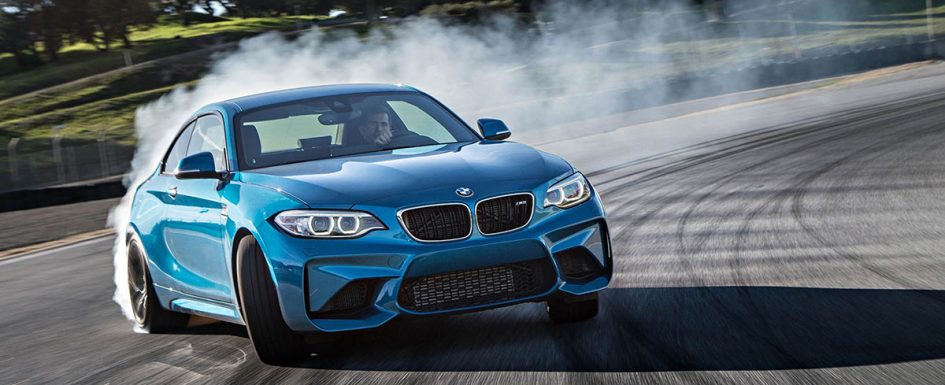Here at BeST, we’ve always tried to dispel some of the well-intentioned, but ultimately inaccurate pieces of advice that get handed down from driver to driver over the years. We’ve talked about how there is a limit to how smooth we want to be, we saw that sacrificing the first corner in a pair of linked corners is not always the right answer, we established that getting on the gas before the apex is a misguided pursuit, etc.
Today, we turn our attention to another oft repeated phrase; that looser is faster. Let’s examine this idea a little more closely, and see what truths and lies it holds.
It’s often useful to start our investigation by trying to uncover the origin of the idea. For example, even today, many people believe that they need to pump the brakes when driving downhill on slippery surfaces. The origin of that practice was from the days before we had anti-lock braking systems (ABS), and so pumping the brakes was a rudimentary way to avoid locking up the brakes and sliding downhill. But now that ABS is widespread, pumping the brakes is no longer necessary. Just because something was once true or true in one context, does’t mean it continues to be true or remain true in other contexts.
So what’s the origin of “looser is fast”?
I wasn’t able to uncover a definitive source, but we can make some reasonable assumptions about the origin. It is likely that the phrase was coined before the days of paved roads, when all racing was on dirt. What’s important to realize is that the way a tire makes grip on dirt/gravel is very different from how a tire makes grip on pavement.
On pavement, when the tires exert a force against the ground, the ground doesn’t move, and the tire generates grip in the appropriate direction (laterally or longitudinally) because of friction. This can be further broken down into adhesive grip, mechanical grip, etc, but that’s not important for this discussion.
The key difference is that on dirt or gravel, when the tire exerts a force against the ground, the ground moves! The tire flings dirt backwards or sideways, thus moving and changing the surface of the road. As a result, the physics at work for creating grip are different, and thus the techniques we need to use for generating the maximum forces are also different.
The race car drivers of that time figured out that on dirt, they could create MORE force if they use thrust vectoring from the driven tires to push the vehicle in the intended direction, instead of relying only on the lateral forces from steering. In order to do this, they had to get the car over-rotated in the earlier part of the corner, and use the drive wheels to “push” the car through the rest of the corner with a greater force than the tires can create laterally on dirt.
I believe this is where the phrase “looser is faster” came from, and the technique described above continues to be used widely to this day in all forms of racing that take place on dirt roads; rally, rally cross, dirt oval sprint tracks, etc. Looser is faster on dirt because it helps get the car rotated more quickly, allows using thrust vectoring to get greater cornering forces, and results in a better corner exit.
However, as we saw with the pumping-the-brakes example, just because something is true in one context, does’t mean it remains true in other contexts.
Does “looser is faster” apply to racing on pavement?
Our objective, no matter what surface we are on, is to always extract and use the maximum forces we can get from our vehicle. The reality of today’s tire technology is that when a tire is sliding beyond its optimal slip angle, it has a lower coefficient of friction, and thus, provides less grip than when it is not sliding.
We still want to get the car rotated quickly, we want the maximum lateral force we can get, and most importantly, we want to accelerate out of the corner as early (based on time, not based on position) as possible. But because of how the tires make grip on pavement, we do not want the car to be loose on corner exit, as that would inhibit our ability to accelerate out of the corner effectively. Additionally, thrust vectoring is not a viable strategy on pavement, since the resulting forces are lower than the force of grip we get from a tire that is at its optimal slip angle.
(Quick note: Thrust vectoring is different from torque vectoring. Thrust vectoring is the concept of using the power of the engine through the driven wheels in the same way as a speedboat uses its engine and propellor. The idea is to generate force in the appropriate direction by displacing the surface. Torque vectoring is the concept of sending different amounts of torque to different wheels to affect the yaw rate of the car.)
The only part of the corner where we may want the car to be looser is on corner entry, in order to get the car rotated quickly. But even in that phase of the corner, there are a couple of factors to consider…
First, is the issue of needing some margin for error to ensure consistency. The fact is, when we slide past the optimal slip angle for a tire on pavement, the loss of grip is pretty significant. Furthermore, we are not perfect drivers, and we are not capable of always rotating the car only the exact amount needed. So we need to build in a certain amount of margin for error into our setup to ensure that we are not flirting with losing control of the car on every corner entry.
(Note: FWD cars can get away with a looser setup than RWD cars because a FWD car will only ever understeer on corner exit, but even then, there’s a limit to how far we want to push that idea in order to place the car correctly and consistently.)
It’s for this reason that race cars are generally set up a little bit looser for qualifying than for the race. The looser setup has the potential to be faster over a single lap, but is too risky for the duration of an entire race.
Second, is the issue of our own driving style, which is vitally important! There is a difference between a car’s natural handling balance, and what we make the car do. Our inputs can make an understeering car very loose in a corner, or make an oversteering car very pushy.
How much we like the handling balance of a car is influenced by how much, and in which direction our own inputs and our driving style shift the handling balance of the car.
So if your inputs and your driving style already generate sufficient rotation on entry, you do not need to make the car any looser. Conversely, if your driving style is such that it tends to shift a car’s handling balance towards understeer, perhaps you can dial in some more oversteer into your setup.
Closing thoughts
The bottom line is that on pavement, there are multiple factors to consider, and looser is not always faster. You only want enough looseness such that you can get the car rotated efficiently, while extracting the maximum lateral grip, and being able to accelerate effectively out of the corner… all weighed against making the car more difficult to drive consistently, and how your own driving style affects the handling balance of your car.
In the world of performance driving, there is a certain bravado associated with oversteer. Handling an oversteering car takes tremendous skill, it looks cool, and it makes great noises. But if your objective is the fastest lap times, make sure you are not limiting yourself by setting up your vehicle to be looser than it needs to be for the type of surface you are racing on.
To learn more about line selection, car control, mental strategies to optimize performance, and more autocross specific insights, enroll in The Complete Autocrosser’s Manual.
For track drivers, coming soon… The Complete Track Driver’s Manual!


I confess I subscribed to the “looser is faster” mantra back in the early 70s. driving a 68 Morgan with a 30ft turning circle on Michelin XASs. Sloppy was always slow, and smoothness rewarded, but the very fastest drivers went just beyond smoothness onto the edge of sliding. This may just have been my driving style adapted to the characteristics of the car but it seemed to work in the days when tyres were the limiting factor. In 4 visits to Nationals the car was never beaten, on course, the only marque that can make that claim. In 1976 it was the 3rd fastest of all Stock class cars, and still holds the record for the largest margin of victory ever in a Stock Class!